
By the end of the 1932-33 movie season, the film industry was seeing light at the end of the tunnel. That light turned out to be the headlight of a speeding train, marked “Legion of Decency”. New stars were emerging, including Mae West (who proved to be a lightning rod for the purity crusaders), Bing Crosby, and W.C. Fields. What’s more, the musical film was back in the public’s favor after a couple of years. And the phenomenon known as “King Kong” was drawing people to the theaters in large numbers.
The Merrie Melodies cartoon series continued to plug Warner’s published songs.
I Love a Parade (8/6/32) – This is not the first song your would think of when you think of a song written by Harold Arlen. This was a bombastic march, and had been recorded twice by the American Record Company. The song had been written with intention for use in the Winnie Lightner feature, “Manhattan Parade”, when such film was conceived as a musical. Unfortunately, at least for American audiences, a last-minute executive decision left the songs on the cutting room floor (although a few snatches of the tune are still heard as musical background). Victor had issued a dance version by Victor Arden and Phil Ohman, with usual vocal by Frank Luther.
About six months after the Victor record was released, Columbia put out a vocal version by night club entertainer/singer Harry Richman. Richman deluvers the song in a manner which suggests he does not intend to be undersold! Even though the song is more about military parases, the cartoon places it in a circus setting, and makes use of the 1912 song, “Oh, You Circus Day” over its main title, a song recorded in 1912 by Arthur Collins and Byron G, Harlan for Columbia, and which was revived by several singers over the years. In 1923, Edison Records issued a “”Diamond Disc” credited to Robert White, assisted by a male quartet. “Robert White” was a pseudonym for Vernon Dalhart, which was itself a pseudonym for Marion T. Slaughter, a Texas born singer trained in operetta. The song was also recorded in 1928, revived by Victor and given to Harry McClintock, a “genuine tramp” who recorded a large number of authentic cowboy songs and tramp ballads, some of the latter being top selling records.
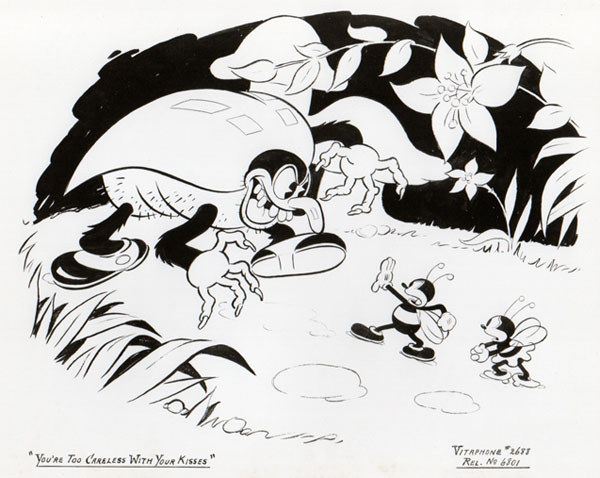
You’re Too Careless With Your Kisses (9/10/32) – This cartoon is set among the honeybees, and features one who can’t leave the strong honey alone, to the point that his missus has to do the work for him, after complaining that he’s too careless with his honey. I know of no commercial recordings of this Harry Woods song.
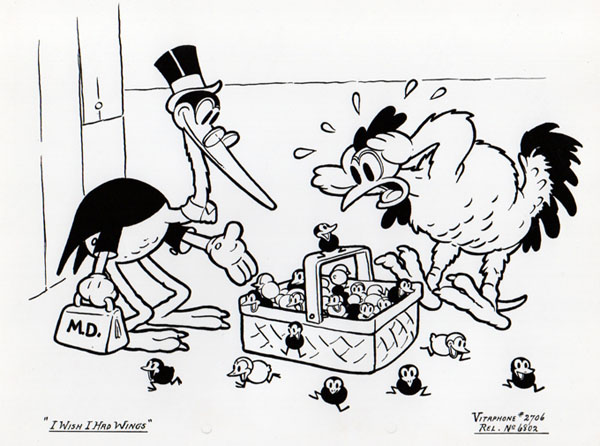
I Wish I Had Wings (10/25/32) – The title song in this cartoon, which deals with barnyard life, was recorded for Victor by Bert Lown and his Orchestra. First, mother hen is expecting. With a hot water bottle on her behind, she is waiting for her eggs to hatch. So is poppa rooster, who calls on Doc Stork to assist in the delivery. While the rooster does the “pappa’s pace” outside the chicken house, pop asks Doc Stork if the new delivery is a boy. A newly hatched black chicken wishes for wings to get over a fence to get the food he’s not getting because other chickens are beating him to it. He makes a set of wings out of an old corset, and eventually gets his fill.
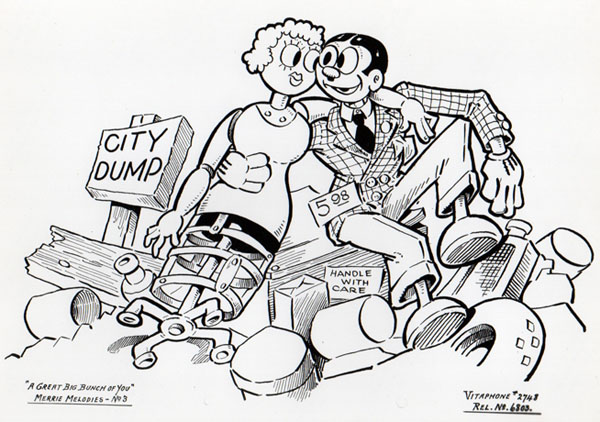
A Great Big Bunch Of You (11/12/32) – The title song of this cartoon was recorded widely both in the U.S. and the U.K. Brunswick issued two versions: a dance version by Guy Lombardo and his Royal Canadians and a vocal record by Cliff Edwards accompanied by a studio band called the Californians. Victor assigned the song to Ted Black and his Orchestra, who spent their time imtating Guy Lombardo. And Columbia issued the song on a “five minute” record with grooves pressed close together to fit on a ten-inch disc, with Joe Moss and his Orchestra (who were featured on a radio program sponsored by Lucky Strike cigarettes). The Moss version featured a vocal by Audrey Marsh and Sammy Fain (who would later find fame as a composer). The cartoon is set in a junkyard, where various pieces of junk cavort to the music (including a piano-playing mannequin with wheels for feet, who provided various scenes of wheeled dancing that were handy for reuse in productions from later years, including Bosko in Dutch).
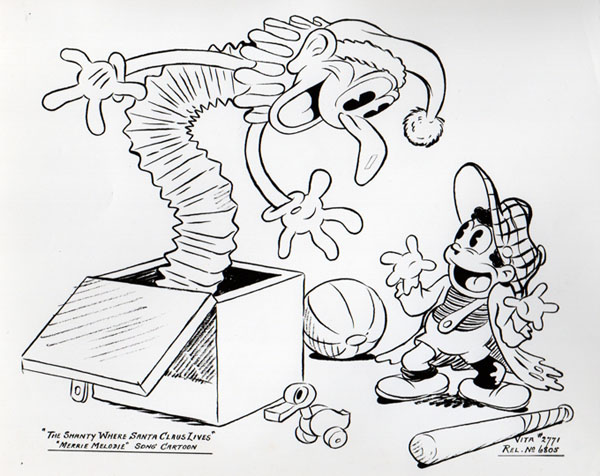
 The Shanty Where Santy Claus Lives (1/7/33) – Again, I know of no recordings made of the title song – “In The Shanty Where Santy Claus Lives” – another good one by Harry Woods.
The Shanty Where Santy Claus Lives (1/7/33) – Again, I know of no recordings made of the title song – “In The Shanty Where Santy Claus Lives” – another good one by Harry Woods.
It does seem odd that they would release a Christmas cartoon after Christmas, although the wintertime setting would still be appropriate. The score includes “Shine On Harvest Moon”, a 1908 song that had become a standard, previously recorded by Kate Smith in 1931, whose performance is lampooned by a doll who inflates herself to proper “girth” by means of inhaling a balloon, and using Kate’s opening line, “Hello, everybody!”
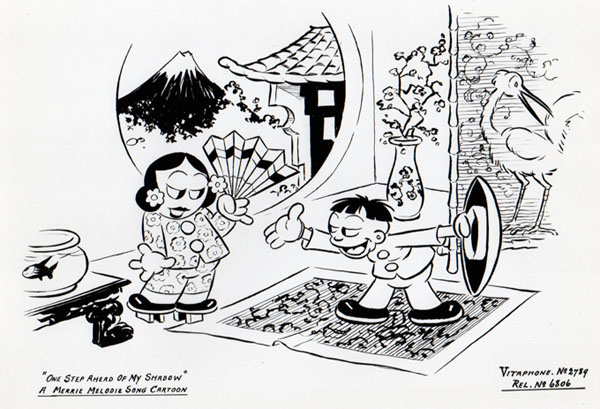
One Step Ahead Of My Shadow (2/4/33) – I don’t know of any commercial recordings of the song, although Frank Marsales seems to have liked it and reused it in several scores. Despite Marsales’s interest, the feature in which it appeared, “Footlight Parade”, had not even been released at the time the cartoon premiered, and when the feature did reach the screen, “Shadow” was included virtually as a throwaway, in a brief presentation which Jimmy Cagney rejects as dreadful. Set in China, the film almost sets the template for what would become the later format for Buddy adventure cartoons (particularly, Buddy the Gob), with a sailor saving a Chinese girl from a dragon. Ethnic stereotypes as usual abound.
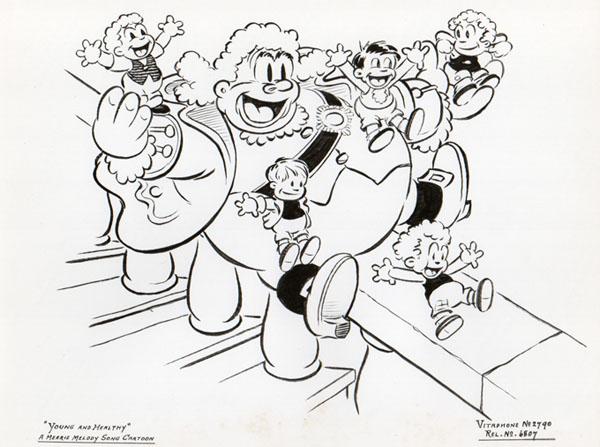
Young and Healthy (3/4/33) – Old King Louis is bored with the balls, parties and picnics of his court, and joins some children who are “young and healthy”. The song had been featured in “42nd Street”, the immortal Busby Berkeley spectacular, and had been widely covered. Victor gave it to Waring’s Pennsylvanians. Columbia gave it to a Ben Selvin house band. And Brunswick had a vocal cersion by Bing Crosby accompanied by Guy Lombardo.
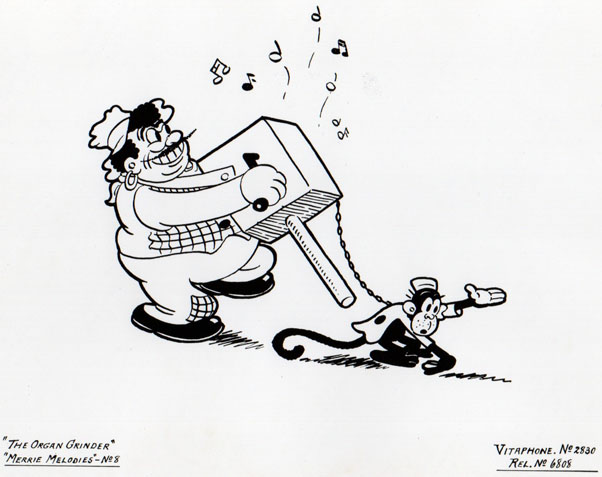
The Organ Grinder (4/8/33) – The score features two Warner songs – a reprise of “Young and Healthy”, and the feature title number “42nd Street”. Not much plot – back-street antics of an organ grinder and his monkey entertaining the kiddies. Many recordings were made of “42nd Street”, including Gene Kardos for the American Record Company dime store labels, Don Bestor on Victor, Hal Kemp as a Brunswick dance record, and the Boswell Sisters as a Brunswick vocal.
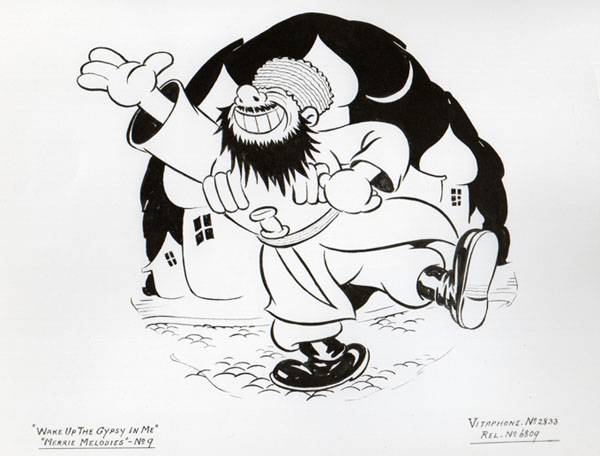
Wake Up the Gypsy In Me (5/13/33) – This cartoon is notable for the fact that it doesn’t plug any other current song but the title melody – the rest of its score featuring Russian folk songs. The serfs and other workers are having a good old time dancing to traditional Russian melodies, when one of them, a female, is spotted by Ricepuddin, the Mad Monk. Ricepuddin – a man so mean that he cheats at jigsaw puzzles, lusts after this young thing. And her reaction to his advances is to give him the “Pooh pooh”. Her cries for help bring out the local population with pitchforks and flaming torches, hell bent for revolution. Ricepuddin, can’t get away from them, even after he turns a donkey into an autogyro! I know of no recordings of the title song, written by Lew Lehr, Harry Miller and Lew Pollack, which utilizes “happy Gypsy” tropes that go back to “Singing a Vagabond Song” (1930) and other such tin pan alley melodies.
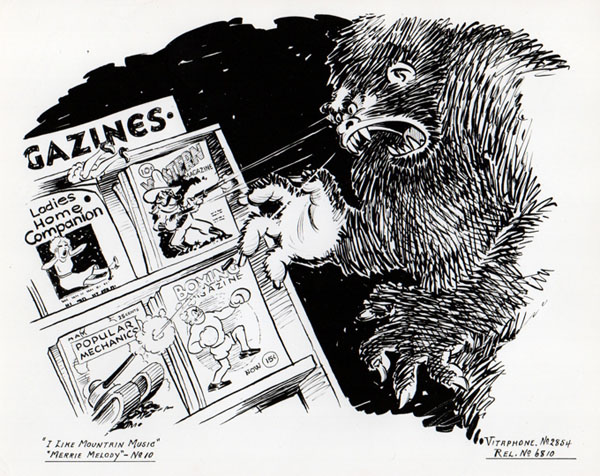
I Like Mountain Music (bootlegged to TV by pirate distributors under the title, “Magazine Rack“) (6/13/33) – Title song was a “go to” number for scores for any sort of rural setting, although Carl Stalling would later prefer another song (“(Where They Play) Rural Rhythm”). Contemporary versions of “Mountain Music” included dance version by Gene Kardos (ARC dime store labels), a dance performance by Ted Weems on Victor, and a country version for the ARC labels by the Wenatchee Mountaineers, a group which included Elton Britt. The cartoon is a collection of spot gags on a magazine rack (similar to a trio of films Frank Tashlin would produce in the later 30’s in color). Later sequences in the film lampoon Warner gangsters, pursued not only by Sherlock Holmes, but by tough guy Edward G. Robinson, using the catch phrase, “They can dish it out, but they can’t take it”. Other songs in the score include “It’s Time To Sing Sweet Adeline Again” (reworking animation from “Pagan Moon”), and “42nd Street”.
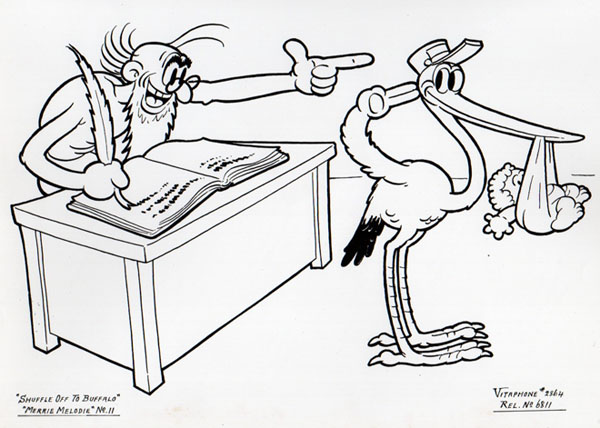
Shuffle Off To Buffalo (7/8/33) – Storyline for this episode set in the stork factory has been reviewed in the Animation Trails article of Charles Gardner, Holy Matrimony and a Stack of Storks (Part 1) on this website. Title song is yet another number from “42nd Street”. Recordings of same included the Boswell Sisters on Brunswick, Gene Kardos with vocal by Dick Robertson on the ARC dime store labels, and in Australia, Jim Davidson and his Palais Royal Orchestra, with vocal by members of the band.


 James Parten has overcome a congenital visual disability to be acknowledged as an expert on the early history of recorded sound. He has a Broadcasting Certificate (Radio Option) from Los Angeles Valley College, class of 1999. He has also been a fan of animated cartoons since childhood.
James Parten has overcome a congenital visual disability to be acknowledged as an expert on the early history of recorded sound. He has a Broadcasting Certificate (Radio Option) from Los Angeles Valley College, class of 1999. He has also been a fan of animated cartoons since childhood.












































Author’s Note: The last two Harman-Ising Merrie Melodies will be dealt with in a subsequent article.
Lovely title card selection, as promised! Also notable for a slew of entertaining MM entries. Harman and Ising were truly rounding into form by this time, though it’s not clear, I think, how much further they could have evolved at WB. Maybe it was for the best that they moved on to MGM. Will Friedwald, for one, commented on “One Step Ahead of My Shadow” in Beck & Friedwald as being a good song.
These films were my entire youth!! In the mid-50s, tv had obtained them…and, mannnn, did i LUV ’em!!
Love the music!
Many of these are among my favorites from of the Harman-Ising era at WB. For sheer entertainment value, I’ll take rubber hose animation, hot jazz and a smattering of pre-Code bawdiness over H-I’s faux-Silly-Symphonies from the latter ’30s.
The songs in this season must’ve been quite popular because they crop up in cartoons from other studios as well; “I Like Mountain Music” shows up in a 1933 Fleischer Screen Song of the same name [ https://www.dailymotion.com/video/x5k6ig5 ] (cartoon titles are occasionally repeated, but this is the only instance I can think of where two cartoons with the same title were released in the same year) while “A Great Big Bunch of You” is prominently featured in the Pooch the Pup short “The Under Dog” (1932) [ https://www.youtube.com/watch?v=5yEnE2xqHP0 ].
Over time, this has become my favorite Harman/Ising period of animation, although I can’t say a lot of bad things about the later lavish animation they’d done for MGM. I just love pre-Code anything, and animation is high on my list. One wonders if, had the imfamous Code not come into play, Hugh and Rudy would have continued with bawdy suggestiveness in their cartoons at MGM. Those MGM toons certainly were an eyeful, trying not only to out-Disney Disney in harrowing detail but also occasionally attempt some camera angles, even for a fraction of a second, that were unique; the same goes with the use of music, but I digrtess… Not having the memory of the visuals in these cartoons, I can’t address whether or not the afore-mentioned experimentation with the camera and odd viewpoints were started here and how different the visuals were in Warner Brothers cartoons, but I know I like the use of jazzy music. I wish they’d taken some of that jazziness with them to MGM just to feature throughout the antics of their characters. It makes me smile that the “spiked” honey is almost a reference to hooch, and the female that has to do the male’s work for him is actually named Honey. This is an Ising entry, but Bosko’s happy little girlfriend was also named Honey, and I think she shares the voice with this bee. As always, another great post featuring fantastic musical selections. “Hot” jazz is not only entertaining to listen to on its own, but it does shake one’s imagination with ideas for animated gags!